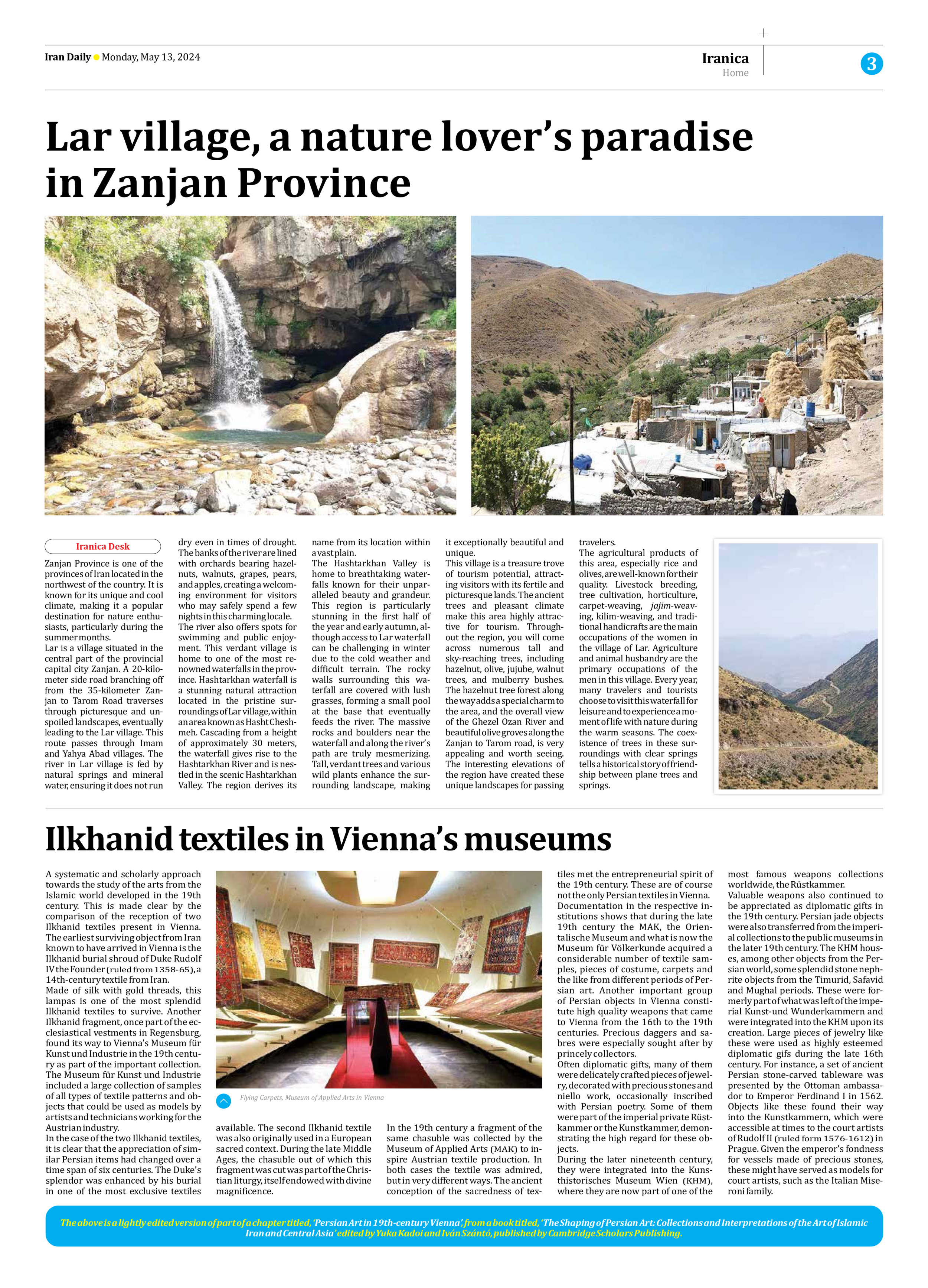
Copy in clipboard...
Ilkhanid textiles in Vienna’s museums
Made of silk with gold threads, this lampas is one of the most splendid Ilkhanid textiles to survive. Another Ilkhanid fragment, once part of the ecclesiastical vestments in Regensburg, found its way to Vienna’s Museum für Kunst und Industrie in the 19th century as part of the important collection. The Museum für Kunst und Industrie included a large collection of samples of all types of textile patterns and objects that could be used as models by artists and technicians working for the Austrian industry.
In the case of the two Ilkhanid textiles, it is clear that the appreciation of similar Persian items had changed over a time span of six centuries. The Duke’s splendor was enhanced by his burial in one of the most exclusive textiles available. The second Ilkhanid textile was also originally used in a European sacred context. During the late Middle Ages, the chasuble out of which this fragment was cut was part of the Christian liturgy, itself endowed with divine magnificence.
In the 19th century a fragment of the same chasuble was collected by the Museum of Applied Arts (MAK) to inspire Austrian textile production. In both cases the textile was admired, but in very different ways. The ancient conception of the sacredness of textiles met the entrepreneurial spirit of the 19th century. These are of course not the only Persian textiles in Vienna.
Documentation in the respective institutions shows that during the late 19th century the MAK, the Orientalische Museum and what is now the Museum für Völkerkunde acquired a considerable number of textile samples, pieces of costume, carpets and the like from different periods of Persian art. Another important group of Persian objects in Vienna constitute high quality weapons that came to Vienna from the 16th to the 19th centuries. Precious daggers and sabres were especially sought after by princely collectors.
Often diplomatic gifts, many of them were delicately crafted pieces of jewelry, decorated with precious stones and niello work, occasionally inscribed with Persian poetry. Some of them were part of the imperial private Rüstkammer or the Kunstkammer, demonstrating the high regard for these objects.
During the later nineteenth century, they were integrated into the Kunsthistorisches Museum Wien (KHM), where they are now part of one of the most famous weapons collections worldwide, the Rüstkammer.
Valuable weapons also continued to be appreciated as diplomatic gifts in the 19th century. Persian jade objects were also transferred from the imperial collections to the public museums in the later 19th century. The KHM houses, among other objects from the Persian world, some splendid stone nephrite objects from the Timurid, Safavid and Mughal periods. These were formerly part of what was left of the imperial Kunst-und Wunderkammern and were integrated into the KHM upon its creation. Large pieces of jewelry like these were used as highly esteemed diplomatic gifs during the late 16th century. For instance, a set of ancient Persian stone-carved tableware was presented by the Ottoman ambassador to Emperor Ferdinand I in 1562. Objects like these found their way into the Kunstkammern, which were accessible at times to the court artists of Rudolf II (ruled form 1576-1612) in Prague. Given the emperor’s fondness for vessels made of precious stones, these might have served as models for court artists, such as the Italian Miseroni family.







